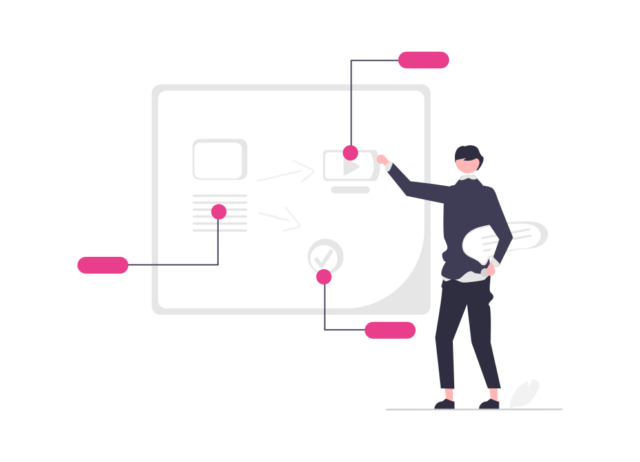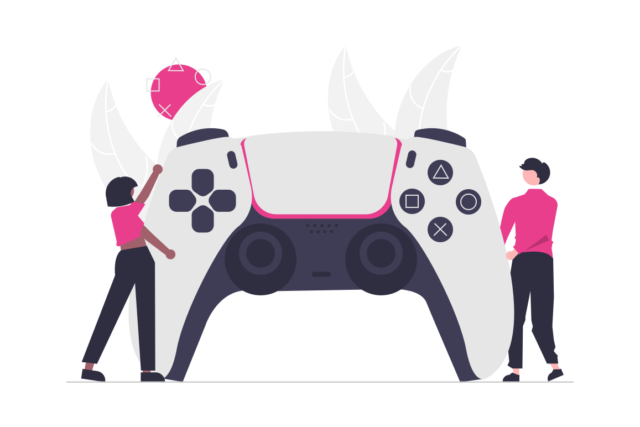4 Reasons Gamification is at the Heart of Agile Workplace Learning
4 Reasons Gamification is at the Heart of Agile Workplace Learning
We are living the fourth industrial revolution and the environment where we work is changing rapidly for many of us. As a result, the skills and competencies, and the competence profiles companies are looking for in employees are also constantly shifting.
The HRD professionals and HR departments are feeling the burden of this in their everyday work. How to develop the workforce in an environment where the skills of yesterday are soon outdated, and the pace of work is often so intense that we can hardly afford to take out people for days and weeks to undergo training? Are off-site trainings worth the investment, many in the HR departments have started to wonder.

The transfer of off-site learning can be weak
The classic learning methods for building skills and competencies, for instance, training seminars organised by educational organisations outside the company, are rarely designed to cater to the rapidly changing needs that are often very specific for your company.
Also, there is another drawback with the off-site training. Has it ever happened to you that after an inspiring course, you come back to your workplace, buzzing with new ideas, only to find out shortly that even if your colleagues show initial enthusiasm, the routines and grooves of people carrying out their everyday tasks are very hard to change? Despite the good wishes of you and your boss, and probably even your colleagues, the transfer of learning can be weak. The benefits of off-site learning stay at your individual level.
I’ve come to realise that spreading learning from external training through the organisation is often very difficult. How to bridge the gap between the specific, everyday problems and the need to develop the workforce time-efficiently? Is there a way for organisations and their individual members to learn in a way that has meaningful and transferable results in every day as well?

Agile learning and gamification start from real problems
One suggestion to improve organisational learning is the concept of Agile Learning (Longmuß & Höhne, 2017). It takes the concrete, topical needs of the organisation and its members as its starting point and brings in the learning onto the organisation through a problem-based approach.
Agile Learning has roots in agile project management techniques, especially the successful Scrum framework that originated in software development more than 20 years ago. Today Scrum is widely established, as well as transferred to the larger field of learning in various industry and company contexts. It emphasises teamwork, flexibility in a rapidly shifting environment, and the multi-professional development team working as a unit to reach a shared goal. Most importantly, Scrum is demand-driven, reflexive, and based on the principles of problem-based learning (or inquiry-based learning). Because of this, it has a great fit for workplace-oriented learning that starts from real problems and challenges that are processed right where they emerge, namely in the organisation and its people.
One useful tool in the agile learning toolbox is gamification. Agile learning centres around alternating phases of learning and doing in the actual working context and gamification is laser-focused on both. It has learning-by-doing in its central DNA.
- Gamification can be used to ease the transfer of learning from training to actual work-related tasks, for instance through contextualising a new strategy or working on company values. This can be done by crafting tasks for learners where they need to work out how the company strategy or values affect and are visible in their day-to-day work tasks.
- Gamified training can also be shared learning projects which encourage peer collaboration and social learning experiences in an informal setting. Team-based gamification solutions often aim to improve team spirit, learning from each other, and use participatory gaming methods. They can also facilitate individual or team reflection.
- Gamification allows you to focus on tailor-made learning and/or competence development that can take real problems and challenges in the workplace as their starting point.
- Gamification can help make workplace training more engaging and effective.

Gamification is a future-oriented learning framework
To be able to bring competitive advantage through people, also we HR professionals need to reimagine our role and ways of working. As Robert Bolton, the Head of Global People and Change at KPMG International puts it, HR organisations and people in them need to be pathfinders and build something unique.
What he proposes is for the HR to be more boundaryless and respond to signals in the environment. Concretely this means, especially now when we are navigating the world living with a pandemic, that HR departments need to
- Be open to experimentation
- Challenge the status quo
- Collaborate across functional boundaries
- Apply design-thinking techniques.
I couldn’t agree more. These four pillars of renewal are also the principles at the heart of agile ways of working and learning, as well as gamification. What comes to uniqueness, an employee-facing gamification project could well be the new, fresh way of learning that starts from, and meets the unique needs of your company, your learners, and your business objectives.
Would you like to give gamification a try and see what it can offer for your organisation?
Click to contact us for more information here! Contacting us is not binding.
Or contact Katerina Eskelinen, Sales Manager, for more information. You can reach her via email: katerina.eskelinen@seppo.io or phone: +358 40 528 4828.